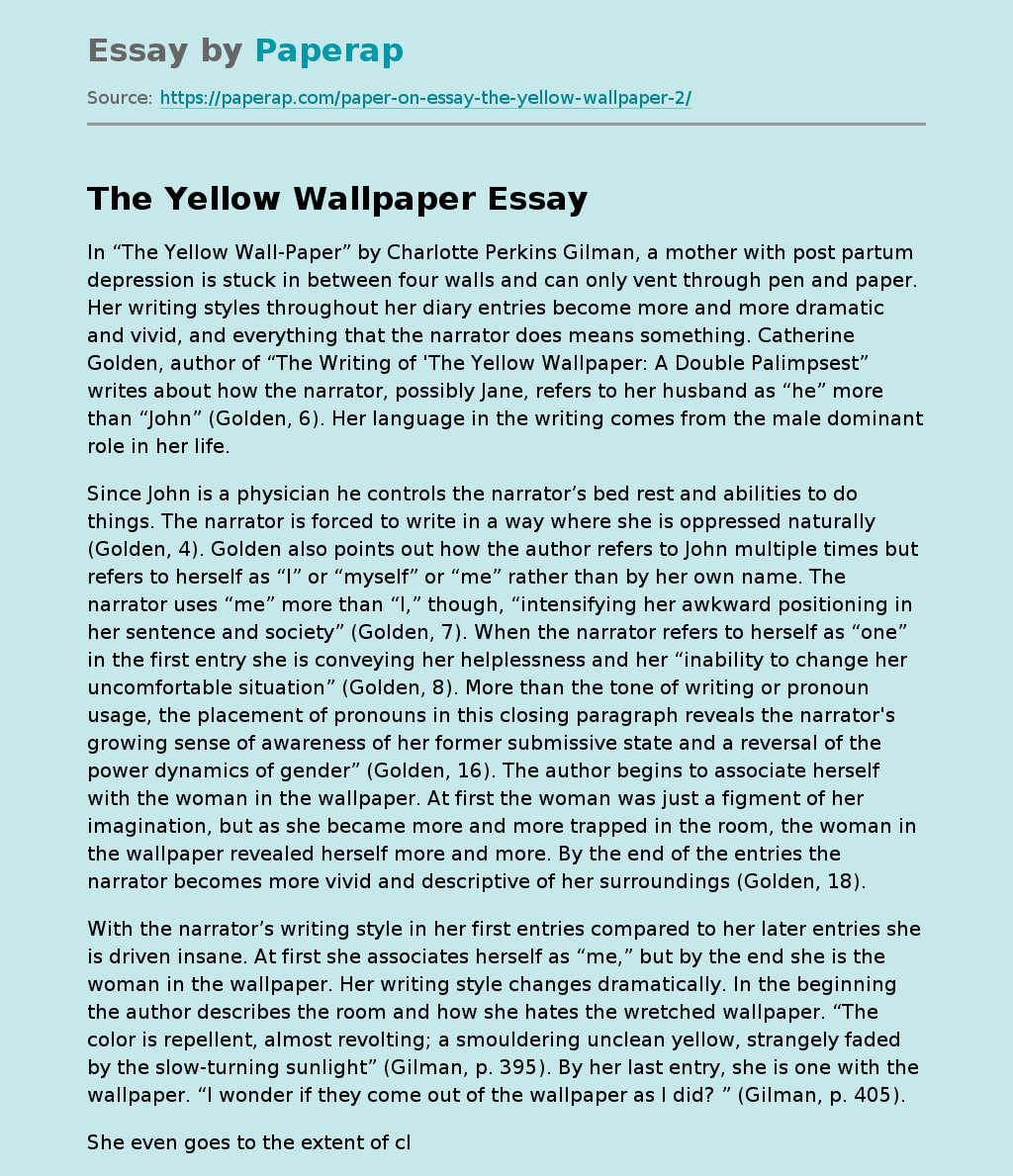The Yellow Wallpaper
In “The Yellow Wall-Paper” by Charlotte Perkins Gilman, a mother with post partum depression is stuck in between four walls and can only vent through pen and paper. Her writing styles throughout her diary entries become more and more dramatic and vivid, and everything that the narrator does means something. Catherine Golden, author of “The Writing of ‘The Yellow Wallpaper: A Double Palimpsest” writes about how the narrator, possibly Jane, refers to her husband as “he” more than “John” (Golden, 6). Her language in the writing comes from the male dominant role in her life.
Since John is a physician he controls the narrator’s bed rest and abilities to do things. The narrator is forced to write in a way where she is oppressed naturally (Golden, 4). Golden also points out how the author refers to John multiple times but refers to herself as “I” or “myself” or “me” rather than by her own name. The narrator uses “me” more than “I,” though, “intensifying her awkward positioning in her sentence and society” (Golden, 7).
When the narrator refers to herself as “one” in the first entry she is conveying her helplessness and her “inability to change her uncomfortable situation” (Golden, 8). More than the tone of writing or pronoun usage, the placement of pronouns in this closing paragraph reveals the narrator’s growing sense of awareness of her former submissive state and a reversal of the power dynamics of gender” (Golden, 16). The author begins to associate herself with the woman in the wallpaper. At first the woman was just a figment of her imagination, but as she became more and more trapped in the room, the woman in the wallpaper revealed herself more and more.
By the end of the entries the narrator becomes more vivid and descriptive of her surroundings (Golden, 18).
With the narrator’s writing style in her first entries compared to her later entries she is driven insane. At first she associates herself as “me,” but by the end she is the woman in the wallpaper. Her writing style changes dramatically. In the beginning the author describes the room and how she hates the wretched wallpaper. “The color is repellent, almost revolting; a smouldering unclean yellow, strangely faded by the slow-turning sunlight” (Gilman, p. 395). By her last entry, she is one with the wallpaper. “I wonder if they come out of the wallpaper as I did? ” (Gilman, p. 405).
She even goes to the extent of claiming ownership of the paper. “But I am here, and no person touches this paper but me, –not alive! ” (Gilman, p. 404). Also, the narrator seems to be depressed at the beginning, like she isn’t excited to be in the room that she is in. As she describes the room it is evident that it was a room of restraint with the “barred windows” and the “rings” (Gilman, p. 395). In the end, her tone is more joyful almost. There are many exclamation points and she seems happy to be “creeping” next to the wall (Gilman, 403). In this story by Gilman the narrator clearly goes insane.
Not only is it evident in the events that she describes, but also in her language that she writes with, describing the room and the use of pronouns, like Golden pointed out.
The Yellow Wallpaper. (2019, Jun 20). Retrieved from https://paperap.com/paper-on-essay-the-yellow-wallpaper-2/

